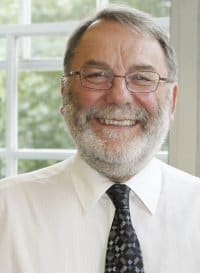By Tami Freeman, editor of medicalphysicsweb
Since the birth of medicine 5000 years ago, physics has played a fundamental role in the development of health technologies. Significant contributions to today’s medical methods range from the application of numerous imaging techniques to diagnosis and patient screening, to the wide variety of treatment techniques made possible by the discovery of radiation and radioactivity.
For their part, medical physicists have a particularly important role to play, both in the discovery of new diagnostic and treatment techniques, and in ensuring the safe and effective implementation of new physics-based medical applications.

In recognition of these facts, the medical journal The Lancet has just published its Physics and Medicine Series, a set of five articles and two comments that highlight the many ways in which physics has revolutionized medical practice. The series, published to coincide with the anniversary of Albert Einstein’s death, calls for medical physics to be promoted as a career choice and recognized as a vocational discipline.
Writing in one of the associated comment articles, Peter Knight (right), president of the Institute of Physics – which publishes physicsworld.com – discusses the “long and happy marriage between physics and medicine”, and puts forward two proposals to keep this relationship thriving in the future.
First is the continued need to support and invest in the physical sciences. Knight notes that most, if not all, of the physics-based techniques and technologies described in the series derive from the discoveries of basic physics research that was undertaken purely to investigate the nature of our world and expand the frontiers of knowledge.
For example, the understanding and manipulation of radiation was made possible by basic research into the structure and evolution of the universe and the building blocks of matter. Knight urges the UK government and other funders to recognize that continued support for that research will deliver corresponding advances in medical technologies in the years to come.
Second, for medical practitioners to fully exploit modern physics-based technologies, it would be hugely beneficial for them to have a sound understanding of the physics involved. As such, Knight suggests that medical schools should consider restoring the requirement for applicants to hold physics-oriented qualifications for entry into medicine.
Another recommendation arising from the series is for closer collaboration and integration between the physical and life sciences, via a new model in which multidisciplinary teams work closely in a shared research environment. Finally, there is a need for every school to aspire to provide high-quality physics education, to ensure a supply of talented scientists who can perform health-related physics research in the future.
“The Lancet‘s Physics and Medicine Series clearly shows the potential to diagnose and treat increasing numbers of patients, with increasing effectiveness, using physics-based techniques,” Knight concluded. “Understanding the physics that underpins these techniques would be a real advantage to medical practitioners, and to their patients.”



